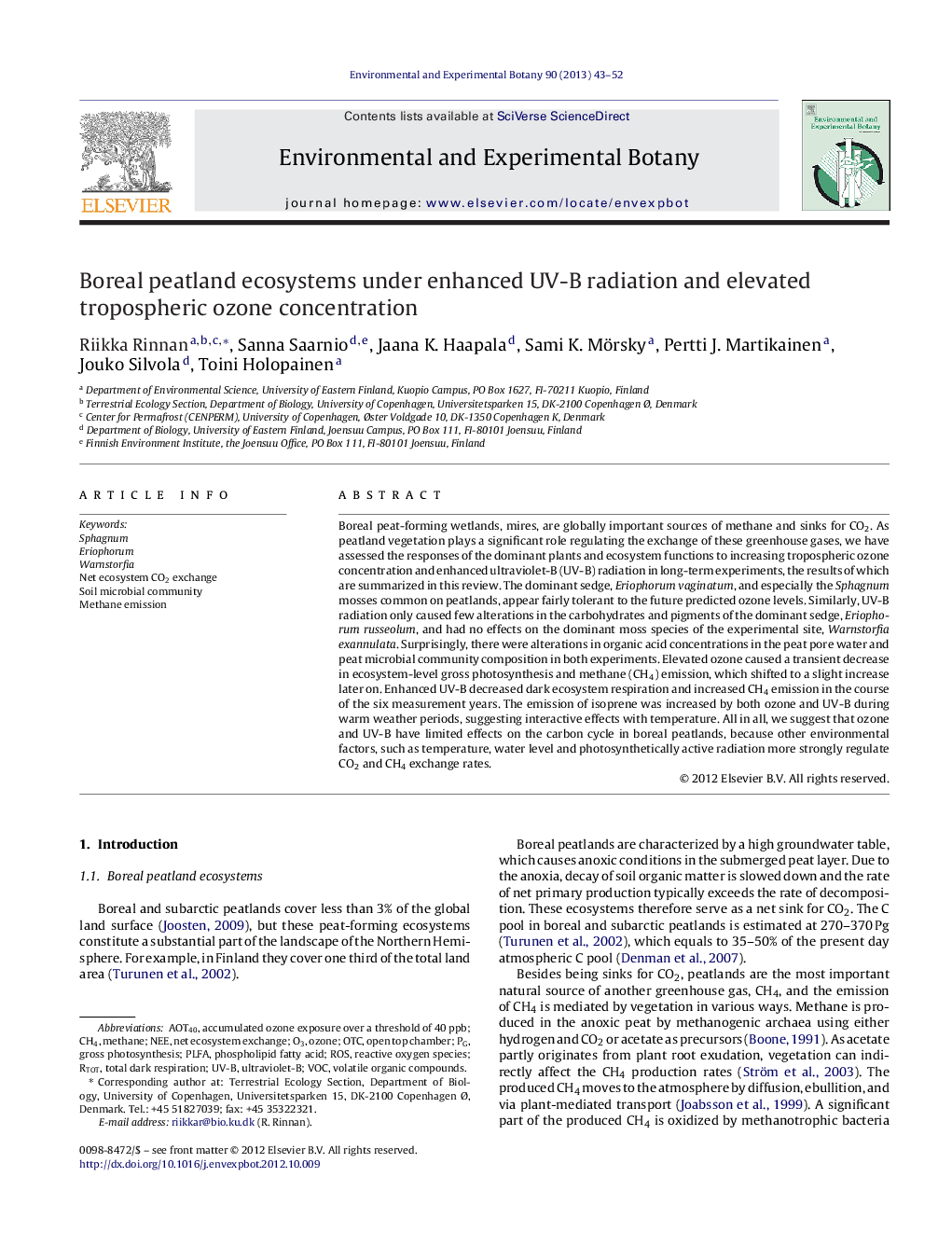| کد مقاله | کد نشریه | سال انتشار | مقاله انگلیسی | نسخه تمام متن |
|---|---|---|---|---|
| 4554527 | 1628087 | 2013 | 10 صفحه PDF | دانلود رایگان |

Boreal peat-forming wetlands, mires, are globally important sources of methane and sinks for CO2. As peatland vegetation plays a significant role regulating the exchange of these greenhouse gases, we have assessed the responses of the dominant plants and ecosystem functions to increasing tropospheric ozone concentration and enhanced ultraviolet-B (UV-B) radiation in long-term experiments, the results of which are summarized in this review. The dominant sedge, Eriophorum vaginatum, and especially the Sphagnum mosses common on peatlands, appear fairly tolerant to the future predicted ozone levels. Similarly, UV-B radiation only caused few alterations in the carbohydrates and pigments of the dominant sedge, Eriophorum russeolum, and had no effects on the dominant moss species of the experimental site, Warnstorfia exannulata. Surprisingly, there were alterations in organic acid concentrations in the peat pore water and peat microbial community composition in both experiments. Elevated ozone caused a transient decrease in ecosystem-level gross photosynthesis and methane (CH4) emission, which shifted to a slight increase later on. Enhanced UV-B decreased dark ecosystem respiration and increased CH4 emission in the course of the six measurement years. The emission of isoprene was increased by both ozone and UV-B during warm weather periods, suggesting interactive effects with temperature. All in all, we suggest that ozone and UV-B have limited effects on the carbon cycle in boreal peatlands, because other environmental factors, such as temperature, water level and photosynthetically active radiation more strongly regulate CO2 and CH4 exchange rates.
► Peatland vegetation fairly tolerant to ozone and UV-B stress.
► Significant changes in belowground parts and peat pore water.
► Minor changes in ecosystem level CO2 exchange.
► Both elevated ozone and enhanced UV-B increased CH4 emission in the long term.
► The C gas fluxes stronger regulated by temperature, water level and PAR than by ozone and UV-B.
Journal: Environmental and Experimental Botany - Volume 90, June 2013, Pages 43–52